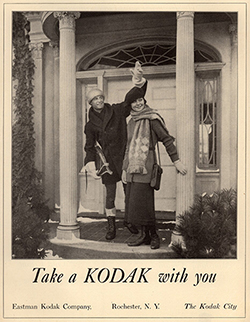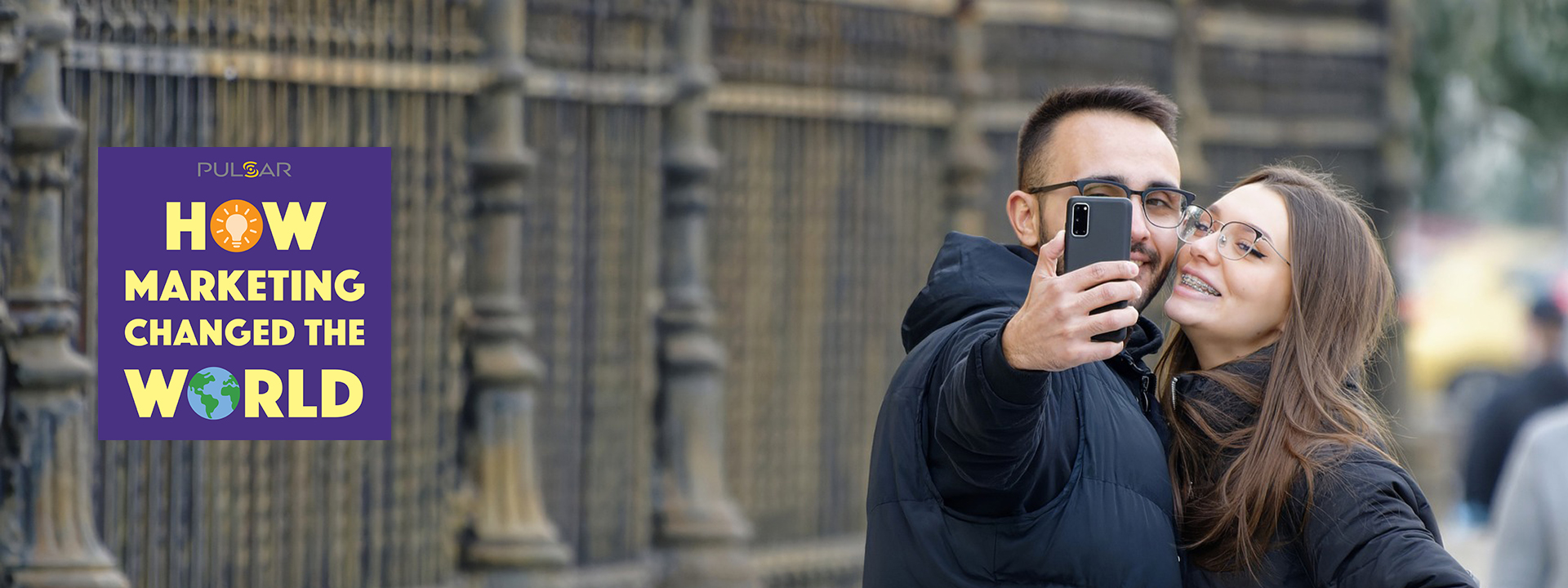SELFIES
The word "selfie" first appeared in an Australian internet forum in 2002. By 2013, "selfie" was declared the "word of the year" by the Oxford English Dictionary. With the invention of the digital camera in 1975, and the first phone with a camera in 1999, photography had evolved to allow an individual to effectively take a snapshot of anything at any time. But it wasn't just technology which caused this phenomenon to explode around the world. The vision of this behavior was actually cast in the early 1900s with an innovative marketing campaign.

Photography that produced a permanent image was invented in Europe in the 1820s. Early cameras were bulky and took a long time to produce a photo. The first photograph of a human, and consequently the first selfie, was taken in Philadelphia in 1839 by Robert Cornelius when he sat in front of one of these large cameras for several minutes. The potential for photography to radically change the world came in 1892 when the newly incorporated Eastman Kodak Company invented the film roll camera, which was lighter, cheaper, and took photos in seconds.
The only problem was that the general public had no idea why they would want to take a photograph of anything. The only images of life that had existed for thousands of years were drawings and paintings. Historically, no one could capture an image of a moment, so there seemed to be no reason to do it. Kodak had to convince people that they needed cameras, and they did it by changing the way we think about life in general.



Kodak created a marketing campaign with a number of components which were completely foreign to human beings. They began in 1904 by featuring images of families on vacation with the slogan "Vacation Days are Kodak Days." That was followed by "Keep a Kodak Story of the Children" in 1916, showing mothers capturing snapshots of their kids enjoying a normal day. The culmination of the messaging came in 1922 with the simple directive "Take a Kodak with You," encouraging people to take photos of everything everywhere. They also introduced an image that no one had ever seen before - a smiling subject. Up until then, people never smiled in painted portraits, so people never smiled in photographs.
Combining smiling, happy people with the idea that every moment can be a memory had a visceral effect on the population. In the span of twenty years, Kodak built an argument that we as humans need physical memories of the moments of our lives, and everything, from the once-in-a-lifetime vacation to the most mundane activity of everyday life, was photo worthy.
Not only that, but taking a photo should be a happy activity regardless of the moment. A 2015 research paper that chronicled the evolution of high school yearbook photos from 1905 to 2013 identified a powerful change. In the 1930s, most students shifted from a stoic expression to a smiling face. By the 1940s, even soldiers in war zones were smiling for photos. Kodak had successfully connected photos with memories and joy.
So as photography became easier and more ubiquitous, it's no wonder all of humanity continually embraced every opportunity to capture our lives and ourselves. Polaroid introduced instant photography in 1949, and digital technology made photography not only instant but endless. By the time cameras became part of our phones, we had all been conditioned to constantly capture images.
That first digital camera from 1975 was actually invented by Eastman Kodak. But the film company that created the selfie mentality would ironically crumble under the competition of the culture it had created. That is an equally fascinating story that will be covered this month on our sister podcast, The Data Behind the Business. But Kodak's legacy endures with over 92 million selfies taken every day around the world. We will forever be a different species thanks to Kodak successfully changing our perceptions and behavior concerning photographs.
SOURCES
- "Selfie" from the Oxford English Dictionary
- "Robert Cornelius and the First Selfie" from the Library of Congress
- "Emergence of Advertising in America: 1850-1920" from Duke University
- "A Century of Portraits: A Visual Historical Record of American High School Yearbooks" from University of California Berkeley
- "The First Digital Camera" from IEEE Spectrum
- "Selfie Statistics" from Photutorial
- All images are public domain







